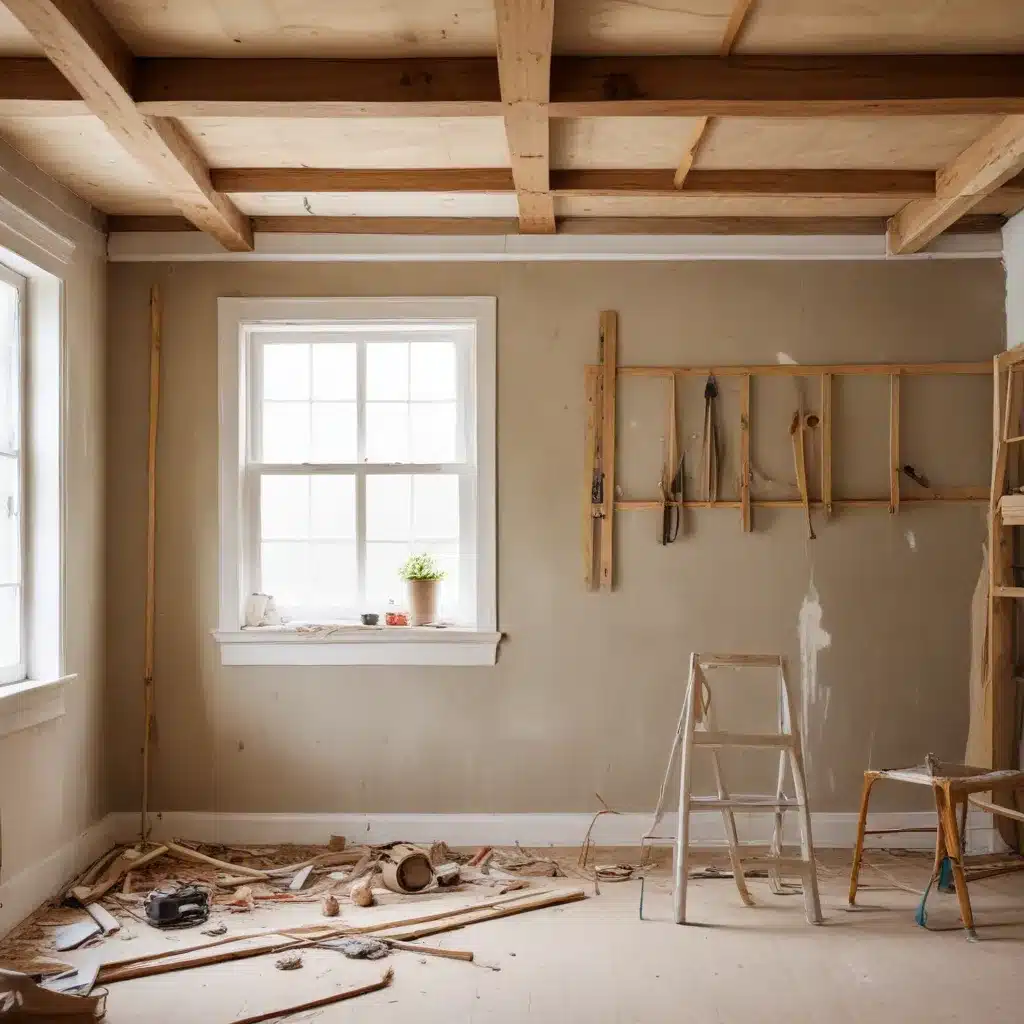As an experienced home improvement consultant, I understand the desire to take on renovation projects and transform your living space. However, the process can quickly become overwhelming if not managed efficiently. In this comprehensive guide, I’ll share 10 time-saving tricks to help you navigate your next home improvement project with ease.
Efficient Home Improvement Strategies
Time Management Techniques
One of the most valuable assets in any home renovation is time. Effective time management can make all the difference in keeping your project on track and avoiding costly delays. Start by creating a detailed timeline that accounts for each step, from planning and procurement to execution and inspection. Utilize digital project management tools to stay organized and send automated reminders to your team. Additionally, consider hiring a construction project manager to oversee the entire process and ensure timely completion.
Cost-Effective Solutions
Budgeting is crucial when it comes to home improvements. Explore budget-friendly projects that deliver maximum impact without breaking the bank. Opt for cost-effective materials, such as laminate flooring or engineered quartz countertops, which can mimic the look of premium options at a fraction of the price. Additionally, consider repurposing existing elements, like refinishing cabinets or upcycling vintage furniture, to save on expenses.
Streamlining the Project
Minimize disruptions and streamline the renovation process by planning ahead. Ensure that all necessary materials and tools are on-site before commencing work to avoid costly delays. Communicate clearly with your DIY or professional team to coordinate schedules and minimize downtime. Additionally, research local building codes and obtain any required permits to avoid potential roadblocks.
Practical Organization Tips
Maintaining a well-organized workspace can significantly improve efficiency. Invest in sturdy storage solutions, such as stackable bins or tool chests, to keep your materials and supplies easily accessible. Establish a designated staging area to sort and prepare items before installation, reducing the time spent searching for misplaced items.
Maximizing DIY Potential
If you’re comfortable with DIY projects, take advantage of your hands-on skills to save time and money. Research online tutorials, join DIY communities, and consider renting specialized tools to tackle tasks you’re confident in. However, know your limits and be willing to hire professionals for complex or safety-critical jobs, such as electrical work or structural modifications.
Enhancing Workspace Efficiency
Optimize your work area to maximize productivity. Invest in ergonomic tools and equipment, such as cordless power tools or adjustable work surfaces, to reduce fatigue and increase efficiency. Implement smart lighting solutions, like motion-activated fixtures or task-oriented illumination, to ensure your workspace is well-lit and energy-efficient.
Home Improvement Project Preparation
Budgeting and Resource Allocation
Before embarking on your renovation, create a comprehensive budget that accounts for all anticipated expenses, including materials, labor, permits, and unexpected contingencies. Allocate funds strategically, prioritizing essential components and reserving a portion for unforeseen challenges. Research and compare multiple suppliers, contractors, and vendors to ensure you’re getting the best value for your investment.
Planning and Scheduling
Meticulous planning is the foundation of any successful home improvement project. Begin by defining your renovation goals and creating a detailed timeline. Identify critical path tasks, schedule milestones, and allocate realistic timeframes for each phase to avoid delays. Regularly review and update your plan as the project progresses to maintain control over the timeline.
Goal-Oriented Approach
Approach your home improvement project with a clear, goal-oriented mindset. Identify the primary objectives, whether it’s increasing energy efficiency, enhancing family-friendly design, or creating a more eco-friendly living space. This focus will help you make informed decisions, prioritize tasks, and ensure that your renovation aligns with your desired outcomes.
Innovative Tools and Technologies
Leveraging Smart Home Automation
Embrace the power of smart home technology to streamline your renovation. Integrate voice-controlled lighting, programmable thermostats, and automated security systems to create a more efficient and convenient living environment. These innovations not only save you time but also contribute to long-term energy savings and enhanced home comfort.
Adopting Time-Saving Equipment
Invest in high-quality, time-saving tools and equipment to expedite your home improvement projects. Consider cordless power tools that eliminate the hassle of cords and laser measuring devices that provide precise measurements with a single click. Explore self-leveling floor lasers and tile saws to simplify complex installations and reduce the risk of errors.
Embracing Digital Project Management
Harness the power of digital tools to streamline your home improvement journey. Utilize online project management platforms to centralize communication, track progress, and collaborate with your team. Leverage augmented reality apps to visualize room layouts and 3D modeling software to plan complex renovations. These digital solutions can save you valuable time and ensure seamless coordination throughout the project.
Sustainable Home Upgrades
Energy-Efficient Renovations
Embrace eco-friendly solutions that not only improve the environmental impact of your home but also contribute to long-term cost savings. Prioritize energy-efficient upgrades, such as high-performance insulation, ENERGY STAR-certified windows, and smart home appliances, to reduce your carbon footprint and utility bills.
Eco-Friendly Material Selection
When selecting materials for your home improvement project, prioritize sustainable and environmentally responsible options. Look for low-VOC paints, FSC-certified wood, and recycled-content flooring to create a healthier and more family-friendly living environment. By making conscious material choices, you can minimize your environmental impact while enhancing the overall quality and aesthetics of your home.
Environmentally Conscious Disposal
Proper waste management is a crucial aspect of any home renovation. Develop a comprehensive waste disposal plan that prioritizes recycling and responsible disposal of hazardous materials. Collaborate with local waste management services to ensure that your project adheres to environmental regulations and minimizes the impact on the surrounding community.
By incorporating these 10 time-saving tricks into your next home improvement project, you’ll be well on your way to a more efficient, cost-effective, and sustainable renovation journey. Remember, the key to success lies in meticulous planning, strategic resource allocation, and a commitment to innovative strategies. For more insights and inspiration, be sure to visit Reluctant Renovator, your go-to resource for all things home improvement.




